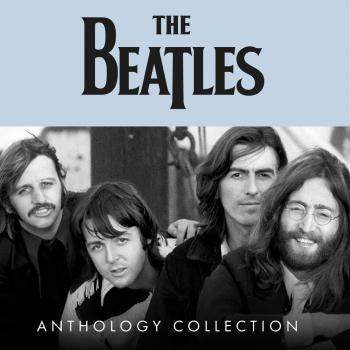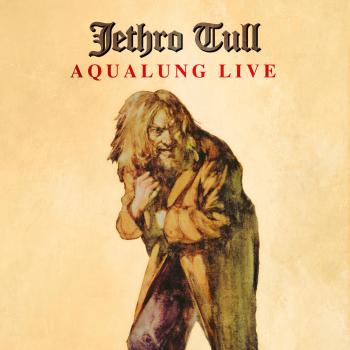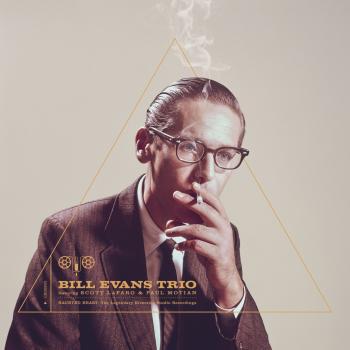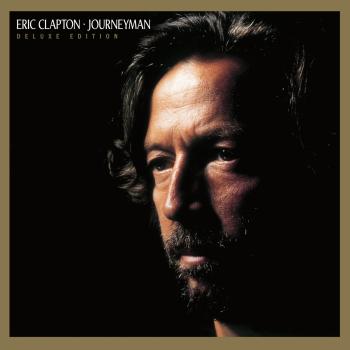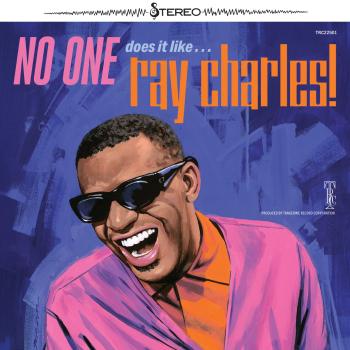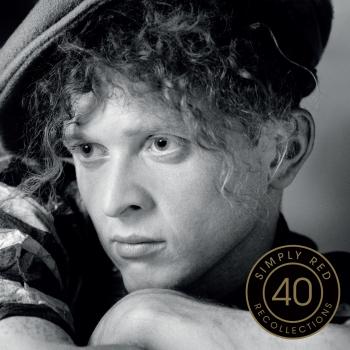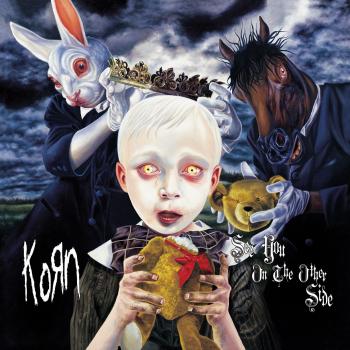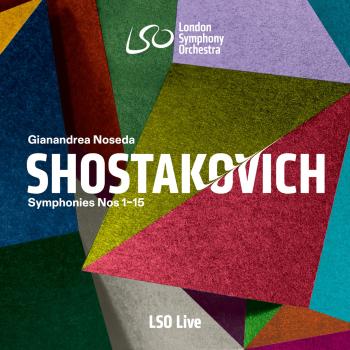
The Coltrane Legacy John Coltrane & Thelonious Monk
Album info
Album-Release:
1970
HRA-Release:
12.02.2015
Album including Album cover
I`m sorry!
Dear HIGHRESAUDIO Visitor,
due to territorial constraints and also different releases dates in each country you currently can`t purchase this album. We are updating our release dates twice a week. So, please feel free to check from time-to-time, if the album is available for your country.
We suggest, that you bookmark the album and use our Short List function.
Thank you for your understanding and patience.
Yours sincerely, HIGHRESAUDIO
- 1 26-2 06:13
- 2 Original Untitled Ballad 09:06
- 3 Untitled Original 05:24
- 4 Centerpiece 07:09
- 5 Stairway To The Stars 03:33
- 6 Blues Legacy 09:05
Info for The Coltrane Legacy
„When this recording was released in 1970, it debuted some valuable Coltrane recordings covering a two-year period. Three of the selections are alternates taken from his Atlantic album with vibraphonist Milt Jackson, 'Original Untitled Ballad' (later titled 'To Her Ladyship') is from the session that resulted in Coltrane's Ole album with Eric Dolphy and Freddie Hubbard, and the remaining two numbers ('26-2' and 'Exotica') find 'Trane meeting up with both pianist McCoy Tyner and drummer Elvin Jones (along with bassist Steve Davis) on records for the first time. Historically significant music, it's generally quite enjoyable.“ (Scott Yanow, AMG)
John Coltrane, soprano, alto, and tenor saxophone
Freddie Hubbard, trumpet (on 'Original Untitled Ballad“)
Eric Dolphy, flute (on 'Original Untitled Ballad“)
Milt Jackson, vibraphone
McCoy Tyner, piano
Hank Jones, piano
Paul Chambers, bass
Steve Davis, bass (on '26-2' and 'Untitled Original“)
Art Davis, bass (on 'Original Untitled Ballad“)
Elvin Jones, drums
Connie Kay, drums
Recorded on January 15, 1959; October 24 & 26, 1960 and May 25, 1961
Produced by Nesuhi Ertegun
Digitally remastered
John Coltrane
Der Saxofonist John William “Trane” Coltrane wurde am 23.September 1926 in Hamlet, North Carolina geboren. Sein Vater John Robert arbeitete als Schneider und spielte verschiedene Instrumente zum eigenen Vergnügen. Die Mutter Alice Blair stammte aus einer streng gläubigen Methodistenfamilie. Kurz nach Geburt des Sohnes zog die Familie in die benachbarte Industriestadt High Point, wo der Junge bis zu seinem zwölften Lebensjahr eine überwiegend glückliche Kindheit genoss. Im Jahr 1939 jedoch starben sein Vater, sein Großvater und Onkel, sodass die Familie sich von da an ohne männliche Ernährer durchbringen musste. Coltranes Mutter suchte sich verschiedene Jobs, der Junge zog sich in sich zurück und begann, sich ausgiebig der Musik zu widmen. Er hatte 1938 angefangen, Klarinette zu spielen, wechselte aber unter dem Eindruck von Jazzstars wie Lester Young, Coleman Hawkins und Johnny Hodges zum Altsaxofon. Nach dem High-School Abschluss zog er 1943 nach Philadelphia, studierte an der Ornstein School Of Music, dem Granoff Studio, arbeitete in einer Zuckerraffinerie und jammte gelegentlich in verschiedenen Bars und Kneipen.
Der Militärdienst verschlug Coltrane nach Hawaii (1945/46), wo er mit einer Navy Band erste Aufnahmen machte. Daraufhin hielt er sich mit Jobs in Bands von Joe Webb (1946), King Kolax, Big Maybelle und Eddie Vinson (1948) über Wasser. Während eines Engagements im Orchester von Dizzy Gillespie wechselte er um 1949 zum Tenorsaxofon, hatte aber noch nicht genügend stilistische Eigenständigkeit, um als markanter Solist aufzufallen. Er lernte weiterhin in den Ensembles von Earl Bostic (1952), Gay Crosse (1952), Johnny Hodges (1954), arbeitete sich ehrgeizig nach oben, musste aber aufgrund seiner Drogenabhängigkeit künstlerische Rückschläge einstecken, als er etwa 1954 aus dem Hodges-Orchester geschmissen wird. 1955 wendete sich das Blatt durch zwei wichtige Ereignisse. Coltrane heiratete am 3.Oktober seine erste Frau Naima (1955–66) und nur wenige Tage danach engagierte ihn der bereits als Star des Szene geltende Miles Davis in dessen Quintett. Während des folgenden Jahres entstanden Hardbop-Aufnahmen wie “Miles” (1955) und die legendären “Relaxin' / Workin' / Steamin' / Cookin' With The Miles Davis Quintet”-Sessions (1956).
Es war eine der besten Bands dieser Ära und Coltrane nützte die Gelegenheit, um mit Möglichkeiten der Loslösung von den bislang dominierenden funktionsharmonischen Grundlagen zu experimentieren. Die Forschung prägte für diese Phase den missverständlichen Begriff “Sheets Of Sound” (“Klangflächen”), wobei es weniger um die Erstellung von Flächen als um die Auflösung von Akkorden und die Relativierung der bisherigen Linienbildungen des Hardbops ging. Die Musiker strebten danach, die als einengend empfundenen harmonischen Prinzipien des Quintenzirkels hinter sich zu lassen und Coltrane modifizierte seine melodisch geprägte Technik durch Terzsubstitutionen und andere Verschiebungen (1958–60). Gemeinsam mit Miles Davis und dem Pianisten Bill Evans entdeckte er die so genannte Modalität für sich, eine auf den Kirchentonarten des Mittelalters basierenden Technik der Skalenimprovisation, die der wiederum zugunsten einer nahezu freien Spielweise während seiner letzten Schaffensjahre hinter sich ließ.
So entwickelte sich Coltrane innerhalb nur eines Jahrzehnts vom ehrgeizigen Newcomer zu einem der bestbezahlten Jazzkünstler überhaupt. Den ersten Aufnahmen unter eigenem Namen wie “First Trane” (1957) folgte eine immens arbeitsintensive Phase in zahlreichen Studiobands des ‘Prestige’-Umfeldes. Coltrane löste sich 1957 erfolgreich von seiner Drogensucht, wurde mit Thelonious Monk im “Five Spot” umjubelt, kehrte 1958 zu Miles Davis zurück und nahm 1959 nahezu zeitgleich die beiden legendären, aber stilistisch komplett verschiedenen Alben “Kind Of Blue” (mit Davis) und “Giant Steps” auf. Auf “My Favourite Things” entdeckte er 1960 das Sopransaxofon neu für den Jazz und nach dem Auslaufen des Vertrages für die Plattenfirma Atlantic formte sich 1961/2 das klassischen Quartett mit McCoy Tyner (p), Jimmy Garrison (b) und Elvin Jones (dr) als idealen Arbeitsbasis heraus, das Coltrane in seiner Suche nach neuen Ausdrucksformen unterstütze. Mit der im Dezember 1964 aufgenommenen Hymne “A Love Supreme” machte Coltrane seine tiefe, religiös geprägte Spiritualität, öffentlich und Alben wie “Ascension” führten ihn im folgenden Jahr schließlich zum freien Spiel.
Als er sich immer deutlicher der kompletten Auflösung der Form zuwandte, veränderte sich auch sein musikalisches Umfeld. In der letzten Lebensphase war er neben Garrison mit seiner zweiten Frau Alice Coltrane (p), Rashied Ali (dr) und Phaorah Sanders (sax) auf der Bühne zu erleben, späte Werke wie “Expression” oder das Schlagzeug-Duo “Interstellar Space” (beide 1967) präsentierten ihn als introvertierten Hermetiker mit Hang zur spirituellen großen Geste. Am 17.Juli 1967 starb John Coltrane an Leberversagen. Sein markanter, harter und zugleich flexibler Ton, die ekstatische Solistik und Hinwendung zu Einflüssen jenseits der afroamerikanischen Stiltradition hinterließen ebenso wie die Entdeckung des Sopransaxofons als Ergänzung des Tenors viele Impulse für die Klangentwicklung des modernen Jazz.
This album contains no booklet.

